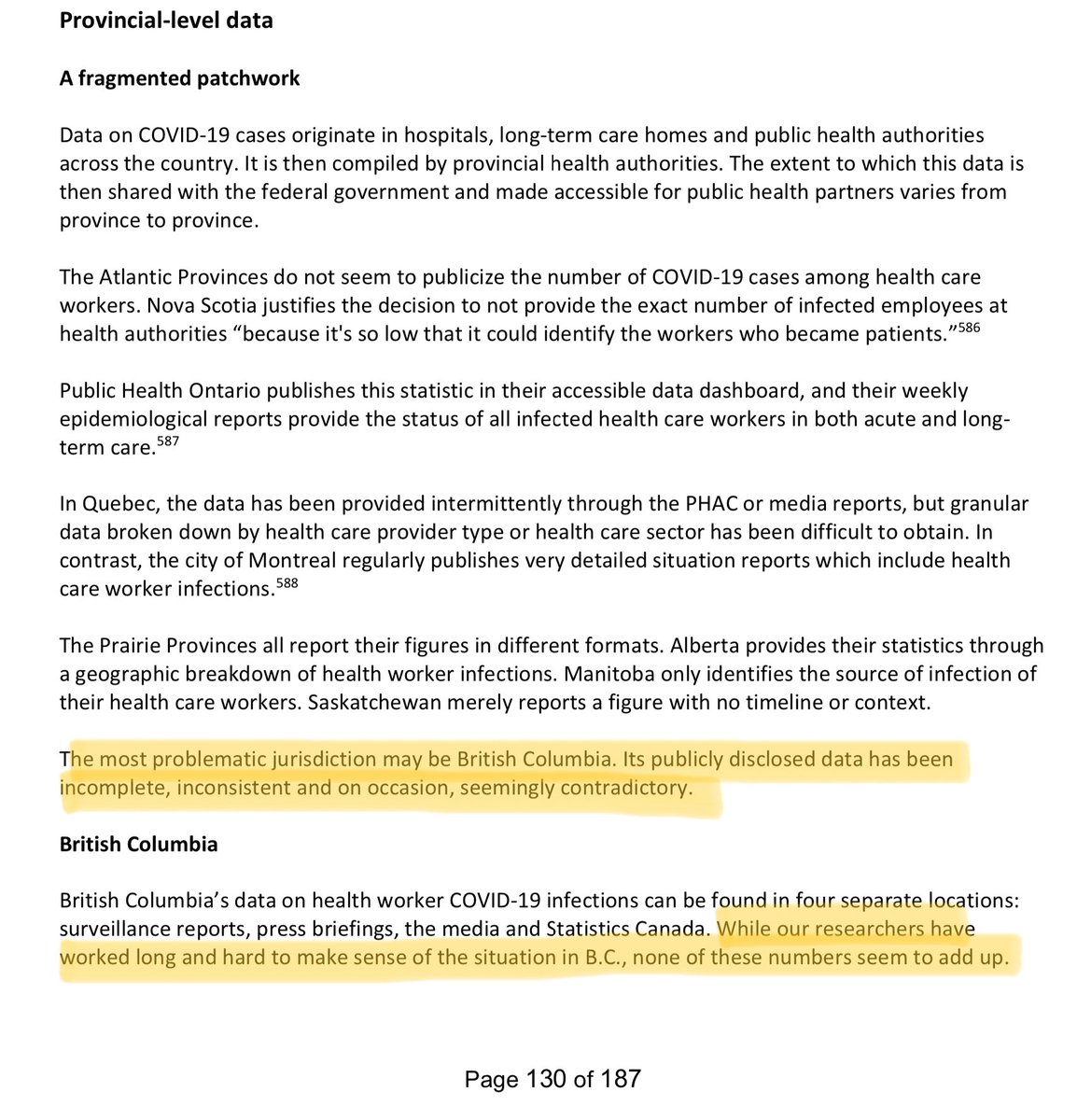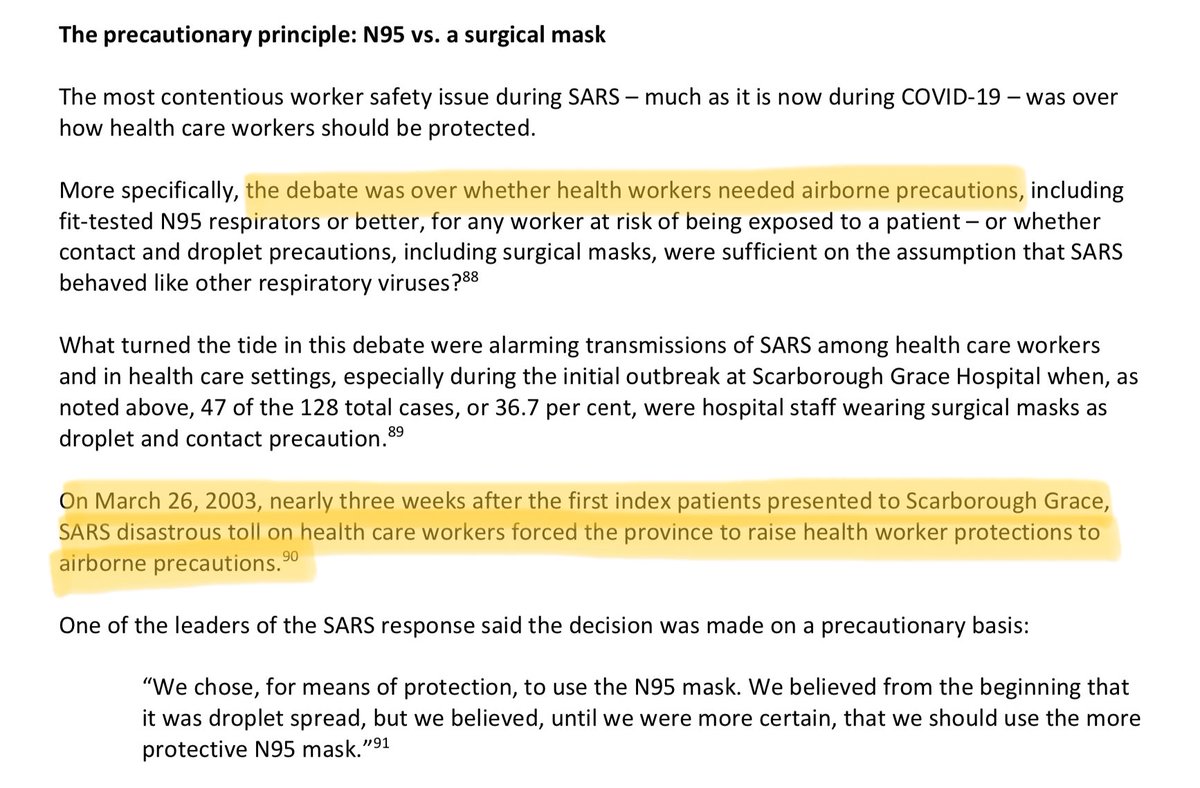
The question why Canada learned so little from its SARS experience is interesting. After all, much of the success of Taiwan fighting Covid-19 is due to their action plan developed in response to SARS. cbc.ca/news/health/co… 

The senior advisor to the original SARS report has written a follow up looking at where things broke down in the Canadian covid-19 response, focusing on failures to protect health care workers and how Canada mismanaged the response. atimeoffear.com
The whole report is worth a close read, but one section that was of particular interest to me is the one on data. And how lessons from data failures during SARS weren’t implemented. While focused on health care workers, the data failures extend far beyond that. 

Six of the 23 problems laid out in the original SARS report pertained to data failures. Very little, if any, has been fixed. To contrast, Taiwan set up a separate data system just to track Covid-19 and integrated it into their national health system in a 72 hour push. In January. 

The data failures outlined in the report are massive and the processes described in it are completely asinine. 

Provincial data handling is generally not any better. But the report points out that things are especially bad in British Columbia. You may have heard me complaining about BC data issues, this report takes it to the next level. 

The report documents how they were trying to get information on the number of health care workers infected with covid-19, and it details how the number of infected health care workers as reported by BC has declined (!!) over time. It’s wild. 

Why does data on health care workers matter? Because it enables us to make sure they are protected. Here is how data on health care worker infections changed the belief on how SARS is transmitted and health care protections were upgraded from droplet to airborne precautions. 

The report identifies health care workers as the “canary in the coal mine”, but data on health care workers was either not properly collected or outright misrepresented. BC does not look good here, to put it mildly. 

The report keeps circling back to how Canadian health officials have neglected the “precautionary principle” and systematically ruled out the possibility of airborne transmission, repeating mistakes made during SARS. 

The report contrasts this to the relative successes in health care worker outcomes in countries that went to airborne precautions early on. It goes into detail on how China changed their protocol. And the failure of the WHO to properly report this. 

• • •
Missing some Tweet in this thread? You can try to
force a refresh









